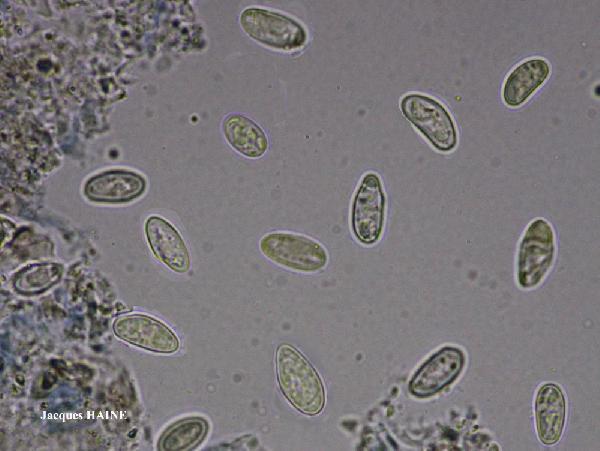Miriquidica atriseda (Fr.) P.F. Cannon
in Cannon & al., Revisions of British and Irish Lichens: 25: 77, 2022. Basionym: Parmelia badia var. atriseda Fr. - Nov. Sched. Crit.: 7, 1827.
Synonyms: Lecanora atriseda (Fr.) Nyl.; Lecanora nephaea auct. non Sommerf.; Protoparmelia atriseda (Fr.) R. Sant. & V. Wirth
Distribution: N - TAA (Nascimbene & al. 2022). S - Bas (Puntillo & al. 2012), Cal (CLU 11060), Si.
Description: Thallus crustose, episubstratic, areolate-verrucose, chestnut brown to dark brown, glossy, when young forming up to 3(-4) cm wide, orbicular patches on the thalli of yellow Rhizocarpon-species, later autonomous, often delimited by a black prothallus. Areoles often scattered over a dark hypothallus, strongly convex to subglobose, 0.2-0.6(-1) mm wide, with blackened margins. Cortex 20-30 µm thick, with a brown upper layer overlain by a c. 10 µm thick, colourless epinecral layer; medulla white, I-. Apothecia lecanorine, at first immersed and urceolate, later more or less sessile, 0.2-0.6(-1.2) mm across, with a chestnut brown to dark brown, shiny, flat to convex disc, and a thin, entire, soon excluded thalline margin. Thalline exciple eucorticate; proper exciple thin, brownish in outer part, colourless within; epithecium olive-brown; hymenium colourless, 45-70 µm high, I+ blue; paraphyses coherent, 1.5-2 µm thick in lower part, pale brown at tips; hypothecium colourless. Asci 8-spored, clavate, approaching the Lecanora-type, but with a well-developed, weakly amyloid tholus and a relatively narrow, non-amyloid axial mass. Ascospores 1-celled, hyaline, oblong-ellipsoid to oblong, blunt at both ends, 8-15 x (4-)5-7 µm. Pycnidia rare, immersed, dark around the ostiole. Conidia filiform, curved, 15-23 µm long. Photobiont chlorococcoid. Spot tests: thallus (in sections) K+ yellow turning red (needle-like crystals), rarely K-, C-, KC-, P+ yellow or orange, UV-. Chemistry: norstictic acid (major), plus rangiformic acid; psoromic acid often present as well, deriving from the thalli of the host. Note: on hard siliceous rocks in upland areas, with optimum above treeline, starting the life-cycle on yellow Rhizocarpon-species, later becoming autonomous. The species was frequently treated as a member of Protoparmelia, but molecular data (Singh et al. 2013, 2015) show that it clusters within Miriquidica.
Growth form: Crustose
Substrata: rocks
Photobiont: green algae other than Trentepohlia
Reproductive strategy: mainly sexual
paras yellow Rhizocarpon spp.
Commonnes-rarity: (info)
Alpine belt: rare
Subalpine belt: very rare
Oromediterranean belt: extremely rare
Montane belt: extremely rare
Submediterranean belt: absent
Padanian area: absent
Humid submediterranean belt: absent
Humid mediterranean belt: absent
Dry mediterranean belt: absent
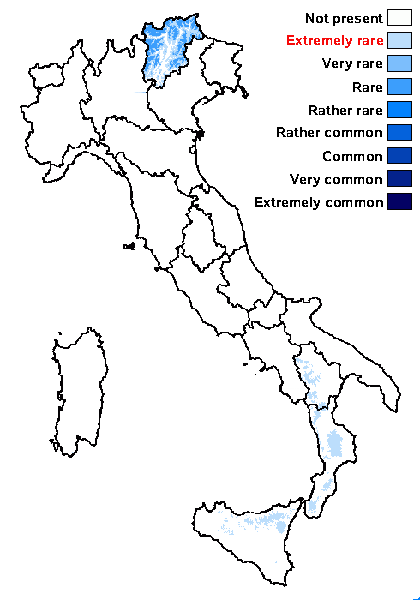
Predictive model
Herbarium samples
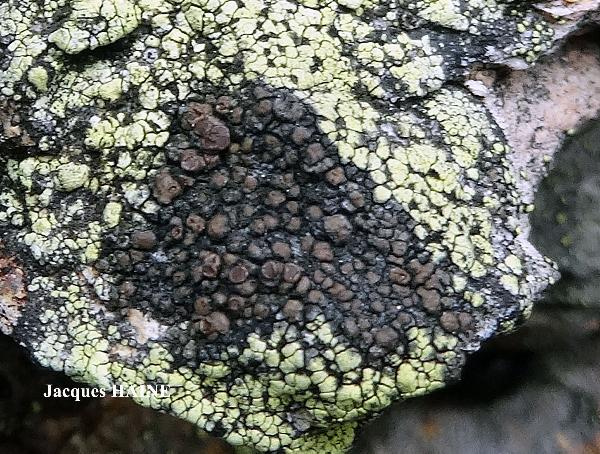
Jacques Haine - Source: http://www.lichensmaritimes.org/index.php?task=fiche&lichen=818&lang=en
Belgium, Ardennes

Jean Pierre Duvivier - Source: http://www.lichensmaritimes.org/index.php?task=fiche&lichen=818&lang=en
Belgium, Montherme
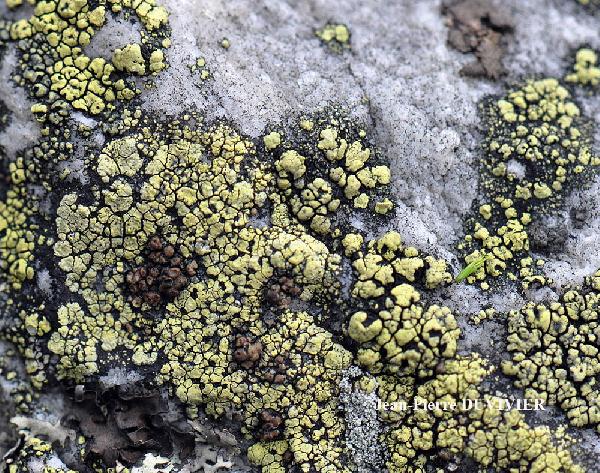
Jean Pierre Duvivier - Source: http://www.lichensmaritimes.org/index.php?task=fiche&lichen=818&lang=en
Belgium, Montherme
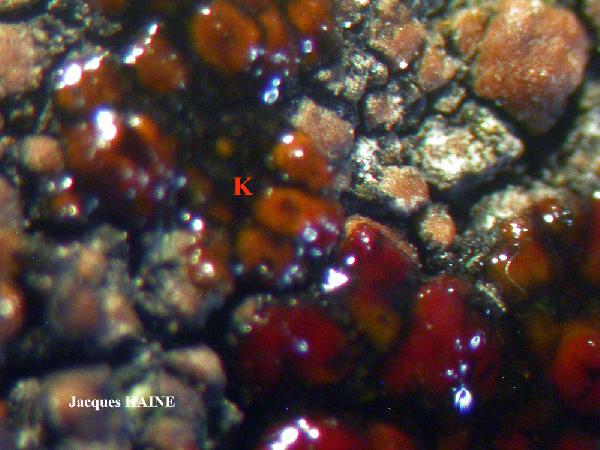
Jacques Haine - Source: http://www.lichensmaritimes.org/index.php?task=fiche&lichen=818&lang=en
Belgium, Ardennes

Jacques Haine - Source: http://www.lichensmaritimes.org/index.php?task=fiche&lichen=818&lang=en
Belgium, Ardennes
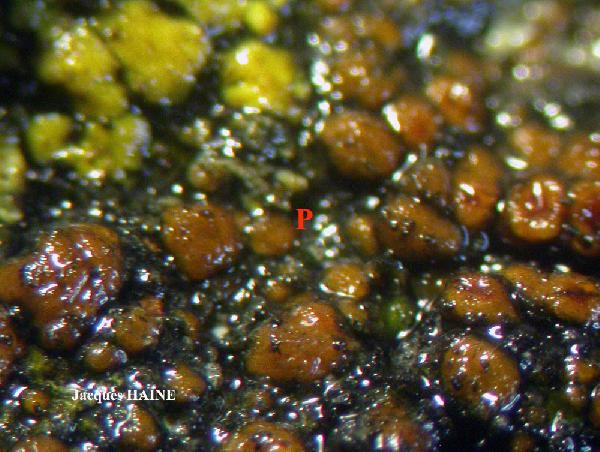
Jacques Haine - Source: http://www.lichensmaritimes.org/index.php?task=fiche&lichen=818&lang=en
Belgium, Ardennes
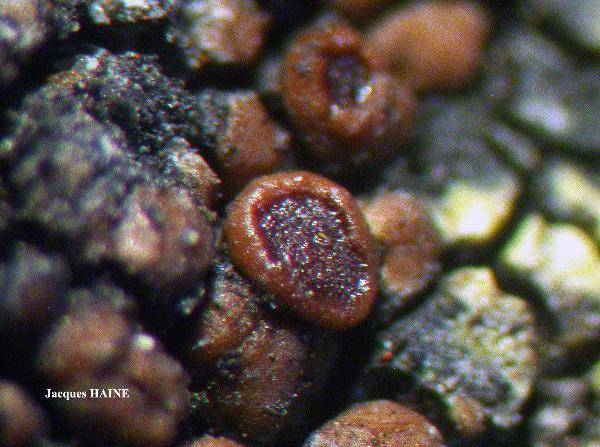
Jacques Haine - Source: http://www.lichensmaritimes.org/index.php?task=fiche&lichen=818&lang=en
Belgium, Ardennes

Jacques Haine - Source: http://www.lichensmaritimes.org/index.php?task=fiche&lichen=818&lang=en
Belgium, Ardennes
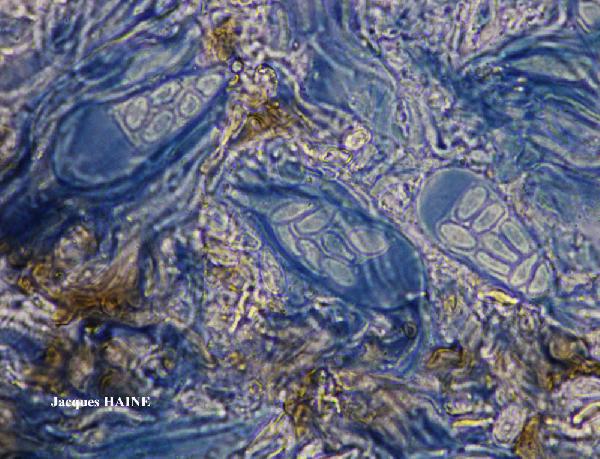
Jacques Haine - Source: http://www.lichensmaritimes.org/index.php?task=fiche&lichen=818&lang=en
Belgium, Ardennes
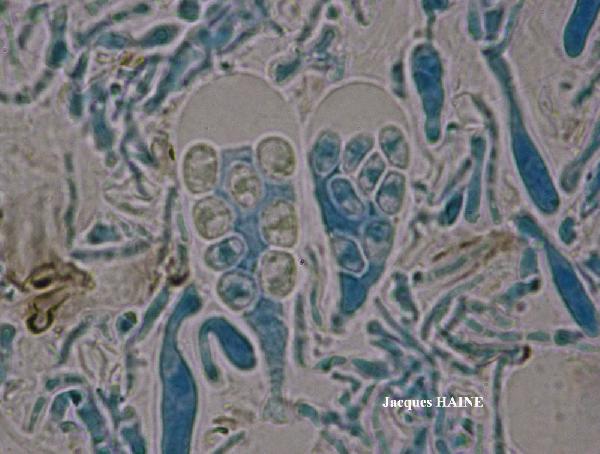
Jacques Haine - Source: http://www.lichensmaritimes.org/index.php?task=fiche&lichen=818&lang=en
Belgium, Ardennes

Jacques Haine - Source: http://www.lichensmaritimes.org/index.php?task=fiche&lichen=818&lang=en
Belgium, Ardennes
Growth form: Crustose
Substrata: rocks
Photobiont: green algae other than Trentepohlia
Reproductive strategy: mainly sexual
paras yellow Rhizocarpon spp.
Commonnes-rarity: (info)
Alpine belt: rare
Subalpine belt: very rare
Oromediterranean belt: extremely rare
Montane belt: extremely rare
Submediterranean belt: absent
Padanian area: absent
Humid submediterranean belt: absent
Humid mediterranean belt: absent
Dry mediterranean belt: absent

Predictive model
| Herbarium samples |

Jacques Haine - Source: http://www.lichensmaritimes.org/index.php?task=fiche&lichen=818&lang=en
Belgium, Ardennes

Jean Pierre Duvivier - Source: http://www.lichensmaritimes.org/index.php?task=fiche&lichen=818&lang=en
Belgium, Montherme

Jean Pierre Duvivier - Source: http://www.lichensmaritimes.org/index.php?task=fiche&lichen=818&lang=en
Belgium, Montherme

Jacques Haine - Source: http://www.lichensmaritimes.org/index.php?task=fiche&lichen=818&lang=en
Belgium, Ardennes

Jacques Haine - Source: http://www.lichensmaritimes.org/index.php?task=fiche&lichen=818&lang=en
Belgium, Ardennes

Jacques Haine - Source: http://www.lichensmaritimes.org/index.php?task=fiche&lichen=818&lang=en
Belgium, Ardennes

Jacques Haine - Source: http://www.lichensmaritimes.org/index.php?task=fiche&lichen=818&lang=en
Belgium, Ardennes

Jacques Haine - Source: http://www.lichensmaritimes.org/index.php?task=fiche&lichen=818&lang=en
Belgium, Ardennes

Jacques Haine - Source: http://www.lichensmaritimes.org/index.php?task=fiche&lichen=818&lang=en
Belgium, Ardennes

Jacques Haine - Source: http://www.lichensmaritimes.org/index.php?task=fiche&lichen=818&lang=en
Belgium, Ardennes

 INDEX FUNGORUM
INDEX FUNGORUM
 GBIF
GBIF
 DOLICHENS
DOLICHENS


